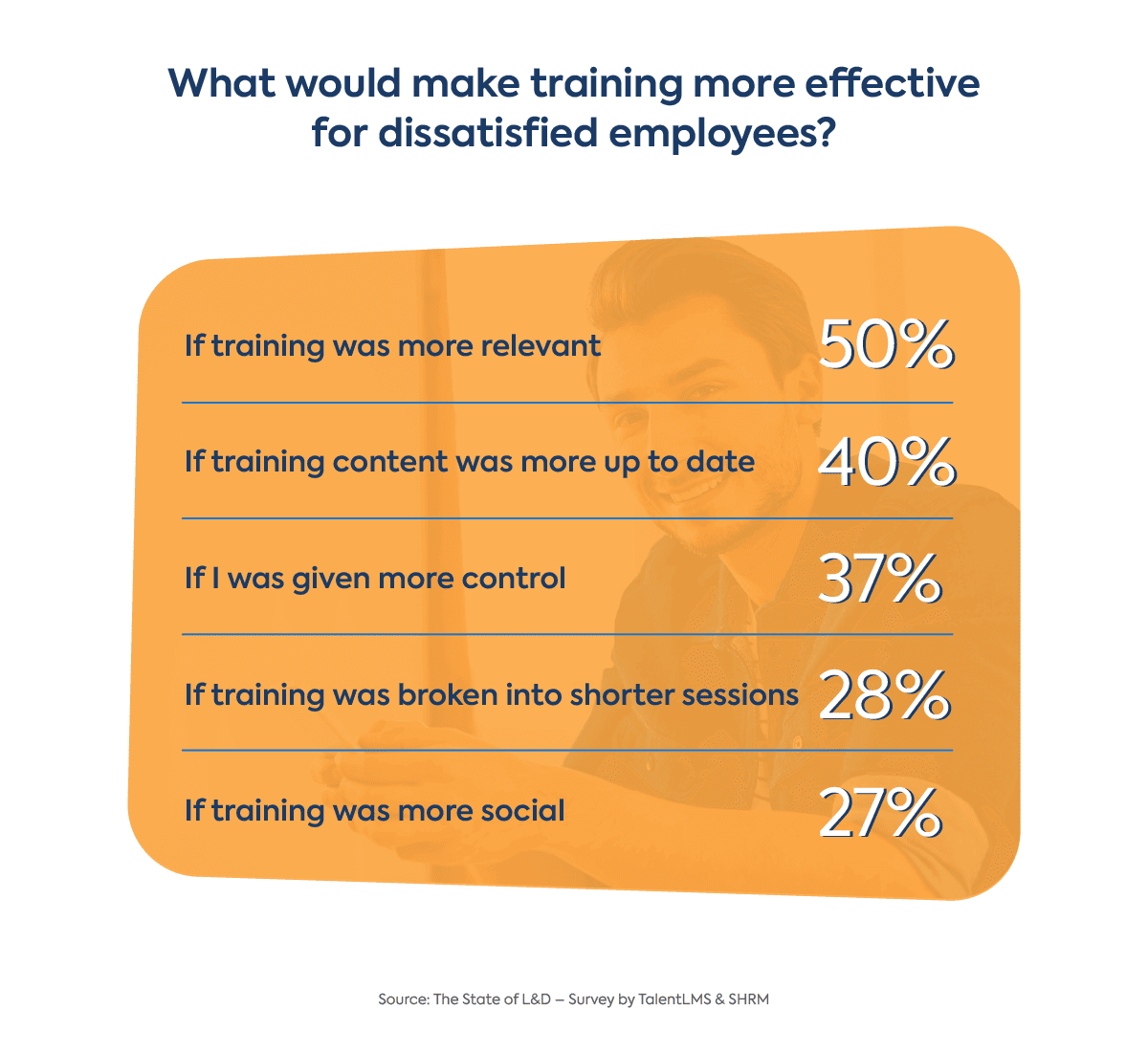Microlearning is nothing new in the learning and development world. Not only is it here to stay, but it’s also the future of the way we do a lot of training in organizations.
So what is microlearning? And why should it be an important part of your company’s training strategy?
In this article, we’ll define microlearning and discuss its benefits. We’ll talk about when it should be used, and when it might not be the ideal solution. Finally, we’ll share best practices for integrating microlearning into your organizational training.
What is microlearning?
Microlearning is content taught in brief, single-concept lessons. Training content is broken down into small digestible chunks that each span anywhere from 3 to 10 minutes.
These microlearning “nuggets” can stand alone or be connected and are usually available in a digital library for quick and easy access.
Why microlearning is valuable to your employee development
There are many reasons more and more companies are turning to these short, to the point training experiences. Microlearning benefits your learning strategy because:
It’s targeted
With microlearning, you’re breaking content down into its most basic components. This lets learners zero in on specific concepts. So employees in need of a refresher on a training topic can easily find the information they need.
For instance, customer service agents helping clients with specific problems can quickly review the best solution before meeting with them. With microlearning, they can log in and get the specific, individual content without having to skim through the entire course.
It’s more engaging
Shorter attention spans require faster access to information. People are used to turning to their phones for quick information.
Short lessons ready for mobile consumption fit right in with today’s patterns of learning. According to a recent poll of employees who are unsatisfied with their employer’s training, 28% said they would be happier with it if sessions were shorter.

It’s accessible
Microlearning is often associated with mobile learning. Training that’s available on mobile devices is more flexible. Employees can engage with training in downtime without disrupting their busy work schedules.
Mobile options for learning also make microlearning more motivating for employees. Today’s workers are used to the convenience of using their smartphones for everything. Offering training in a familiar environment makes it easier to engage with the content.
Train your teams on the go with TalentLMS
Download the native mobile apps for iOS and Android,
and reach out to learners anywhere, anytime.
It makes delivery easier and more affordable
Microlearning enhances scalability. It lets you update content and roll it out to your entire workforce immediately. That means you can respond to changes in policy or training demands more quickly. It also means savings in the time and cost of gathering people for traditional training.
Microlearning courses are also more cost-efficient to produce and roll out. You can use your own LMS features to build out content. And many LMS platforms are built specifically for microlearning, making it a breeze to input content and deliver training.
It boosts knowledge retention
Focusing on one concept at a time and reinforcing it with quizzes helps make content more “sticky.”
Small, easy-to-access lessons are also easier to revisit. This improves the likelihood that employees will refresh their knowledge when needed.
How can I apply microlearning at work?
There are many reasons why microlearning is a good idea for your organization. But how does it apply to your existing training needs? Here are a few ideas on ways to incorporate microlearning into your company’s training strategy.
- Break down training to accommodate busy employees. Are employees finding it hard to take a break for training? You can make their jobs easier by breaking down existing training into bite-sized learning, meaning one concept per 5 or 6-minute lesson.
- Make policies and training manuals more accessible. Onboarding or compliance courses that require employees to go through hefty manuals and PDFs can be off-putting. Instead, provide microlearning “nuggets” of the most important parts of the content.
- Create a searchable library of training modules. When you create short, hyper-focused lessons, you have the basis of a useful content database. Name your lessons so it’s clear what content they cover. Then put them in a corporate library for employees to browse or search. A searchable library makes it easier for people to discover and access the information they need to succeed in their jobs.

When microlearning might not be the ideal solution
As powerful as it is, there are times when microlearning training isn’t the optimal way to get information across. Learn to distinguish so you can get the best results out of the learning method.
Here are a few instances of when not to rely on brief training solutions.
Teaching complex ideas
Microlearning is a powerful tool for conveying simple information, but may not be a great fit for more complex concepts.
If concepts are closely connected (for instance, a four-step process for proper machine operation), it can be hard, or even dangerous, to break them down into stand-alone lessons. Instead, reserve microlearning for high-level overviews and reviews.
Mastering a topic
If you want employees to gain a deep understanding of a topic, a few six-minute lessons won’t always get them there. For example, learning a new programming language takes more in-depth focus.
Micro-lessons are still a powerful approach to learning. Just be sure you’re applying them correctly. Save microlearning for just-in-time learning and quick reinforcement.
4 best practices for using microlearning in your training
When you’re ready to incorporate microlearning into your training programs, here are a few best practices for making it work.
1. Make it mobile
As discussed, microlearning and mobile learning complement each other. Make your lessons mobile-friendly to take advantage of the familiarity of using a smartphone.
Choose a platform that makes building for mobile devices easy and efficient, and start rolling out content right away.
2. Stick to one idea per lesson, cut out the excess
Breaking down existing training into bite-sized learning takes more than just chopping up lessons. You will need to do some content modification. Make your lessons micro by ensuring each focuses on one concept. And cut out the “fluff” that doesn’t add to the core idea.
Determine your content by revisiting the objectives of the course. And simplify language to keep your training accessible.
3. Use a variety of media
Often, you can simplify content by replacing lengthy lectures or slides of text with more intuitive, engaging media.
Use short videos or animations to explain concepts. Insert infographics that give a clear picture of a process. Imagery can be a great tool for communicating big ideas quickly.
Meet TalentLibrary™
A growing collection of short, ready-made, video courses
that cover the skills your teams need for success at work![]()

4. Make it fun with gamification
Get people interacting with content to engage them. Give them quizzes or drag-and-drop activities that help reinforce what they’re learning.
And add a healthy bit of competition with badges or a leaderboard that lets them see how their progress compares with other learners.
Prepare for today’s learners with microlearning
Microlearning is a solution designed to keep up with employee experiences in the increasingly fast-paced and flexible workplace. Knowing how and when to use it will help you create a more effective and engaging training strategy.
And a focus on quality employee development will in turn boost your company’s productivity and employee retention as you continue to grow.
Originally published on: 11 May 2016 | Tags: Microlearning
